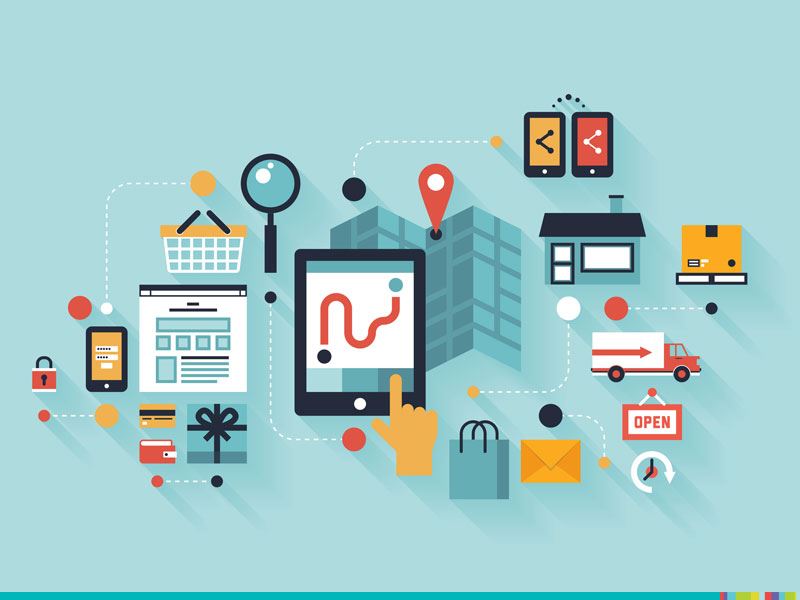If you work in marketing, we’ll be impressed if you’ve made it through 2014 and the first part of 2015 without hearing the word(s) ‘Omni Channel’ at various trade shows, conferences, seminars or board meetings. If you have managed to make it this far, then we’re sorry to be the ones to kill your streak.
In short, ‘Omni Channel’ is the new ‘blue sky thinking’, and much like the latter is something that sounds fresh, exciting and revolutionary, but is actually a pretty basic building block in the world of marketing, painted to look like a modern internet buzzword that only the most prestigious blogs can use to entice you in.
This Google Trends graph shows that ‘Omnichannel’ start to soar at the start of 2014, although the idea of it certainly pre-dates then.
But what is it?
Omni comes from the word omnis, meaning ‘all’ or ‘universal’, and in the marketing world refers to creating a seamless experience for your customers, through every channel. Regardless of whether a customer is in-store, online, opening an email or on the go, using their phone, omni channel is the campaign name for tying everything together and making it one. In-sync and smooth.
You may have heard of multi-channel before? Omni Channel is simply just Multi-channel, done correctly.
You’re already (almost) doing it
As a small business, you can be limited by budgets, time constraints, team sizes and other factors, which can all make developing a beautiful website, attractive store, flawless smartphone and tablet app, implement an effective email marketing strategy, having quality data on your customers, being active and effective on social media and all the other requirements of a modern business. This doesn’t mean, however, that you aren’t trying, and often succeeding to make Omni channel part of your strategy, even if you don’t know it.
No business tries to make a disjointed and separated marketing strategy – the goal for most business is to infuse a sense of company culture and branding into everything that has their name on it. Does your website look, feel and have the same voice as your store and staff? Are your social media campaigns just as playful, or straight talking, as your emails? if so, you’re halfway there on the omni channel journey.
How to complete the journey
When we say ‘almost’, what do we mean? The aesthetics and feel of your marketing channels are one thing, but how they behave and interact with each other is another, and it’s this that takes an omni channel desire into reality. Can a customer tweet you the size of shoe they want, then switch to their tablet to select a colour without having to re-enter any values, before leaving it and checking out the next day at work? For a lot of businesses, this sort of functionality is incredibly hard to implement, due to costs and technicalities.
What steps can you take?
Focus on two channels and branch out
Trying to tie together all of your channels in one fowl swoop is likely to end in disaster. Instead, pick two channels (Email and desktop, for example) and brainstorm ways you can make the experience between the two seamless, or ‘omni’.
Some hypothetical examples:
Make it so when a customer clicks through from a personalised email, they’re met by a personalised landing page
Clicking an ‘add to basket button’ on an email adds it to your basket, instead of taking you to a page where you can then do this
Remember that a customer purchased candles on your website, and email then a selection of alternatives, or candles holders a week later
Talk to your customers
What do your customers want to be able to do? What would make their life that little bit easier? Work towards implementing it and adding it to your omni channel check list. Do they want to be able to order something on their phone and have it waiting for them in store? Put measures in place to implement this, and shout about it when you have – give them what they want, as a matter of priority.
Don’t limit yourself to marketing
Contrary to a lot of the points made in this article, and by the title “Omni channel marketing”, don’t limit yourself to marketing, when creating an omni channel experience. You can just as easily apply the same multi-level experience to your customer support, or other customer facing areas of your business, to create a more streamlined front for your customers.
Put your focus on user experience, not just conversion rate
Sometimes the user’s needs can be lost amidst a need for higher conversion rates and more traffic/sales. in the case of Omni channel marketing, putting user experience at the forefront is often the best way to directly increase all your other statistics. Give the user what they want, make their life easier (Which includes being available on any device they want, and syncing across the all). Put yourself in the mind of a consumer, not in the mind of a target-driven marketer.
Back

